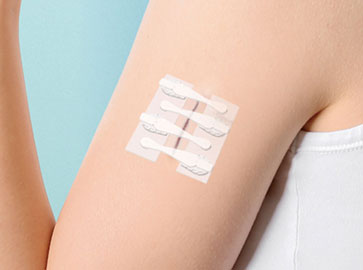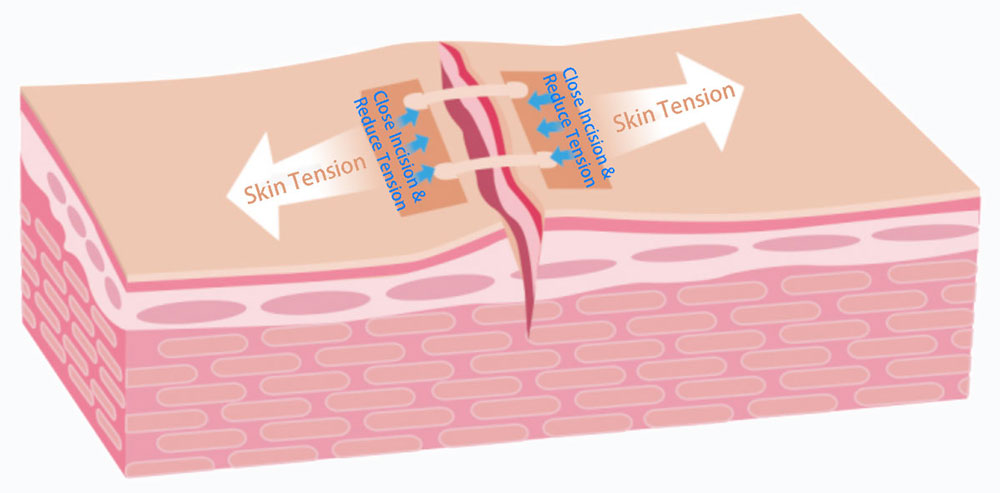Skin tension reduction devices are recommended by doctors for better results while facing a wound or surgical incision. This product is designed to reduce tissue tension in the skin around a wound or surgical incision, to create a more favorable environment for wound healing, and to minimize complications, such as wound dehiscence and excessive scarring.
In addition to the Dispositivo di chiusura dell'incisione chirurgica BI-FIX, Haichuang Medical also has a specialized skin tension reduction device product that can be used to bind wound edges together and reduce skin tension. Typically, it is used for small lacerations and small surgical incisions.

Reducing tension on the surgical incision or wound plays an important role in both wound healing and scar reduction. The following is how it affects these processes:
Wound Healing
Minimize Tissue Deformation: By reducing tension, the surgical incision is less likely to deform or stretch tissue. This allows the wound edges to stay close together, which promotes the primary intention of wound healing. Primary healing allows for faster, more efficient healing while minimizing scar tissue formation.
Improved Blood Flow: Reducing tension helps maintain proper blood flow to the wound area. To provide the oxygen and nutrients necessary for tissue repair and cell regeneration, adequate blood supply is essential.
Reduces Risk of Dehiscence: High tension at the surgical incision increases the risk of wound dehiscence (wound opening). This complication can lead to infection and delayed healing. A tension-reducing device can help prevent this.

Reduce Scarring
Minimize Scarring: Reduced tension during wound closure results in thinner, less visible scars. Tissue trauma is reduced when wound edges are properly aligned. Tissue trauma can lead to hypertrophic (raised) or scotomatous (overgrown) scar formation.
Improved Scar Aesthetics: Scars are usually more aesthetically pleasing when tension is reduced. A well-closed incision with minimal tension is more likely to result in a flatter, less raised, and less pigmented scar.
Promote Scar Maturation: Over time, scar tissue goes through a maturation process. Reducing tension allows the scar to mature in a more controlled manner. This can result in a softer and less prominent scar.
The specific characteristics of the wound, the location of the wound, and the needs of the individual patient determine the choice of skin tension reduction device. It ensures proper wound healing with minimal complications and aesthetically healing results. In addition, post-operative wound care, including proper hygiene, medical dressing and scar management techniques, also plays an important role in optimizing wound healing and scar appearance. Based on the unique requirements of each case, healthcare professionals will determine the most appropriate method.
